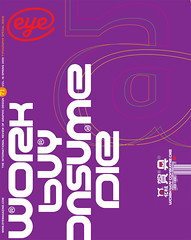Spring 2009
California gleaming
Overspray: Riding High with the Kings of California Airbrush Art
By Norman Hathaway. With an essay by Mike Salisbury<br>PictureBox, $50, £31<br>Vivid red fruit that shines as though made of Bakelite; naked women’s bodies undulating like sand dunes; Rod Stewart with tubular legs made of polished chrome . . . Yes, this was the stuff that the commercial art world was so keen on in the early 1970s. Artwork produced in painstaking fashion with a rather cumbersome spray gun whose use required thousands of person-hours. Was there ever so much effort devoted to something so ugly?
It was all meant to go away in the late 1970s, of course. Punk came along, and with it a Year Zero attitude to anything that wasn’t instant and DIY. Airbrush art was the visual equivalent of prog (progressive rock), and duly consigned to the same dustbin.
The problem was that it never really died. Think Alex Ross superheroes and Alan Aldridge and Harry Willock at the Design Museum. When graded tones became a standard feature in computer colouring technology, it was a natural progression. Today, superglossy equals ‘ironic chic’ on the album sleeves of indie landfill bands.
No, if you really want a ‘forgotten’ artform (see Dan Nadel’s comment on Hathaway’s ‘Hey, good looking!’ on the Eye blog, 12 January 2009), then you have to look to fantasy art. When Roger Dean (mushroom-shaped planets) and Frank Frazetta (outsize space-beasts) get their shows at the Design Museum, we will know that equality of opportunity has arrived.
But I digress. Art director and design historian Norman Hathaway’s Overspray is an entertaining and admirably serious-minded compendium of four key airbrush artists from California: Dave Willardson, Charles E. White III, Peter Lloyd and Peter Palombi. Their work spans soft porn (for Playboy, Oui, etc.), record covers, advertising and movie posters, and is here restored to its former glory. California gleaming? Yes, indeed.
The advantage of limiting the content to four people is that they come off as individuals, rather than as production-line illustrators serving some undefined god of glistening West Coast cool – the line taken by the less differentiating books on airbrush art available on the shelves (and there are plenty of those – again, did this artform ever really go away?). So, for example, Palombi is clearly obsessed with detail, and his sexualised image of an electric plug entering a socket (for the Eddie Harris album Is It In – subtle) is an essay in fetishism.
The introduction is by Mike Salisbury, who, back in the day, employed many of these artists on the Sunday supplement of the Los Angeles Times (circulation: two million). He writes in a suitably 1970s gonzo style, and if you can forgive his self-indulgence (‘our LA hip long hair was done at a salon, we always wore sunglasses, and we drove nice cars’) he is perceptive about the decadence and spiritual vacuity of the environment that produced the art. Responding in oils, he suggests, was never a possibility.
Yet, for a book that promises to contextualise the airbrush scene, there are limitations. The influences from psychedelia and surf culture are present and correct, and the key notion that this was a revival is helpfully explained. But what of the political climate of the time, and questions of sexual politics? Were there any female airbrush artists? Did women’s liberation ever enter the purview of these ‘Kings of Airbrush Art’)? What was their positioning in relation to the counter-culture more generally? Or did their relatively handsome pay cheques exclude them from the club? The interviews hint at some fascinating contradictions, but do not go deep enough.
You may agree with Hathaway (who blogs on www.overspraybook.com) that the work represents ‘the aesthetic choice of a generation’. That’s fine, and who can deny its technical wizardry? But at the same time, aesthetic choices can be the wrong choices, and for many Eye readers the book will be a reminder of why the punk wars had to be fought in the first place.
Roger Sabin, writer, lecturer, Central Saint Martins College of Art and Design, London
First published in Eye no. 71 vol. 18 2009
Eye is the world’s most beautiful and collectable graphic design journal, published quarterly for professional designers, students and anyone interested in critical, informed writing about graphic design and visual culture. It is available from all good design bookshops and online at the Eye shop, where you can buy subscriptions and single issues.

